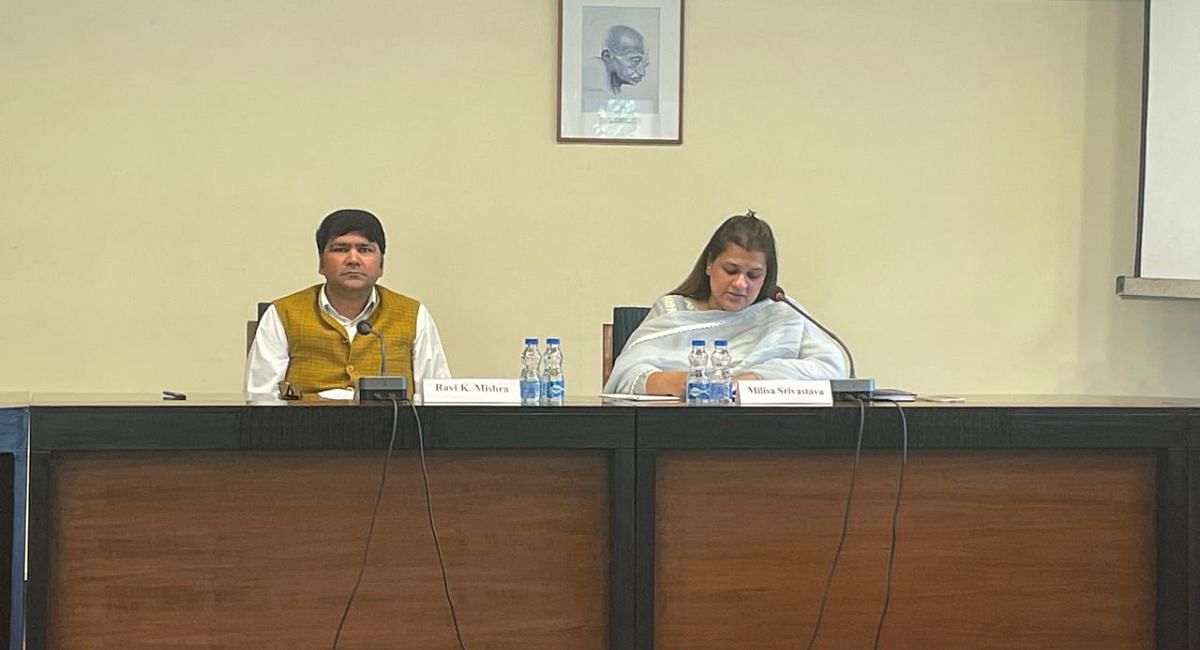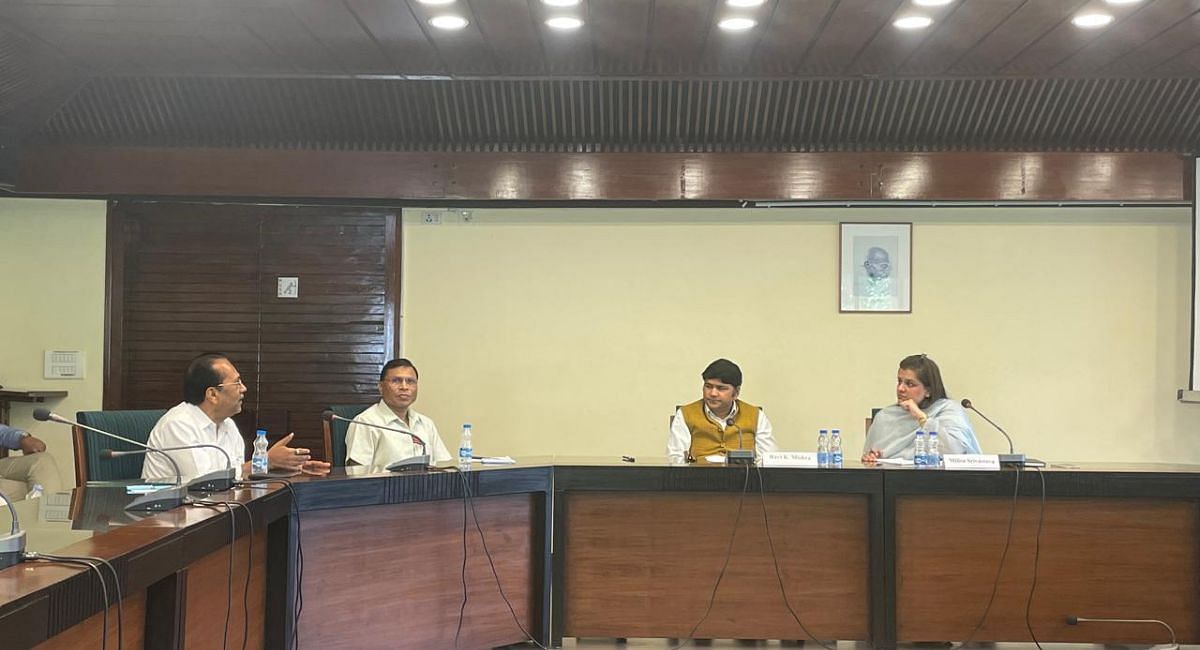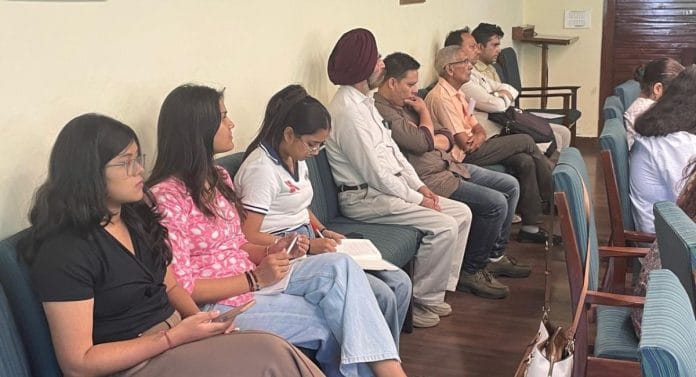New Delhi: India’s freedom wasn’t solely due to the efforts of those who took to the streets or those who wielded arms. A significant contribution came from artists, poets, and media. A talk at the Prime Minister Museum and Library focused on how Indian leaders responded to imperialism by using art as a weapon.
An audience gathered at the PM Museum to participate in a talk on Heritage Nationalism on June 25—at least that’s what they were told. Even the title read the same. But what they witnessed over the next 30 minutes was a presentation of sorts on the contribution made by artists toward igniting the fire of nationalism before independence.
“The content of the paper is not in sync with the title, but still, it is an interesting dimension to be aware about,” pointed out Ravi K. Mishra, Joint Director, PMML, handling the situation of the visibly disappointed audiences in the room.
Heritage Nationalism describes how perceptions and experiences of the ancient past shape political identities in the digital age. But Srivastava’s talk focused on the colonial period, without drawing its impact on the current times.
“Cultural nationalism stands on its own, independent of political nationalism,” said historian and academic researcher Milisa Srivastava. The historian added that this form of nationalism highlights the emotional aspects, focusing on feelings of belonging, loyalty, and identity, rather than just the legal status of a nation or individual cost-benefit analyses.
While Srivastava’s soon-to-be-published paper was a quick stroll through history, the audience was barely interested.
The seminar room resembled a scene from a sleepy Sunday afternoon. Among the scattered audience of about 20, some seemed to be battling drowsiness, while others were glued to their mobile phones. Even when the floor was open for discussion, the silence was as thick as a marshmallow cloud.
Amid this quietude, an attendee sitting near the panel made some suggestions to Srivastava. “You could have put some photographs to make the session interactive. I also felt the chronology was missing, you were jumping timelines,” they said. The room stirred slightly as if waking from a nap, acknowledging the rare spark of feedback.

Also read: Technical education in colonial India ignored Dalit dreams. It trapped them in labour
Brushes of change
Art served as a formidable weapon during India’s nationalist movement. And each brushstroke challenged colonial dominance, invoking the spirit of nationalism.
For instance, artists like Abanindranath Tagore played a pivotal role by infusing their work with nationalist themes.
Srivastava informed the audience that not just artists but their disciples also rejected Western artistic styles.
Instead, they favoured Indigenous techniques like watercolours and Japanese wash paintings. Nandalal Bose, one of Tagore’s followers, imbibed the Swadeshi spirit in his art.
Bose used handmade paper to produce scenes from the lives of Indigenous people.
He created a series of paintings that invoked and celebrated the Indian way of living and working. “These posters rejected Western material style and instead used Japanese calligraphic strokes, natural colours, and rural life scenes,” said Srivastava, junior fellow at PMML.

Media, literature & more
Areeba, a manuscript researcher at the event, was among the few who were keenly noting down the points made by Srivastava. She wanted to know about the role newspapers played in fostering nationalism in India, especially after the revolt of 1857.
“Their (media) contribution has always been downplayed. Srivastava is also not covering it in its entirety but something is better than nothing,” she whispered to this reporter.
Nationalist literature, including novels, essays, and patriotic poetry, also stirred the freedom movement in India. Key writers like Rabindranath Tagore in Bengali, Vishnushastri Chiplunkar in Marathi, Subramania Bharati in Tamil, Bharatendu Harishchandra in Hindi, and Allama Iqbal in Urdu contributed significantly through their works.
Notably, Bankim Chandra Chatterjee’s novel, Anandamath, inspired many nationalist leaders, and the song ‘Vande Mataram’ became a rallying cry.
Rabindranath Tagore’s Gitanjali, a collection of poems, offered a philosophical vision of a free India, while Sarojini Naidu’s lyrical compositions spoke of sacrifice and resilience.
These works were not just stories; they were blueprints for revolution, inspiring readers to dream of and fight for freedom. The literature fostered a deep sense of national pride and unity. A live example of this was witnessed in the seminar room as well.
Tarānah-e-Hindi
In the flow of her reading, Srivastava struggled with lines: “Mazhab nahi sikhata aapas mein bair rakhna, hindi hai hum, watan hai hindustan humara (Religion doesn’t teach us to hate each other, we are Hindi, our country is Hindustan)” — from the song, Saare Jahan Se Acha.
The mispronunciation pushed the audience to sing the right lyrics in unison. The audience came alive, the sleepyheads were up and phones were kept away.
It’s proof of how the song, an emblem of Indian nationalism, written in 1904 has become a part of national consciousness.
Saare Jahan Se Acha is written by poet Allama Iqbal and was formerly known as Tarānah-e-Hindi (anthem of the people of Hindustan). Mishra pointed out that Iqbal later became pan-Islamist and was critical of Indian nationalism.
But, that’s the inclusivity of India as a society and nation.
“Nobody ever said that just because Iqbal is a pan-Islamist, his song is in any way of less value than it would have been otherwise,” said Mishra.
Interestingly, Iqbal’s Tarānah-e-Hindi was followed by his Tarānah-e-Milli: chīn-o-arab hamārā hindostāñ hamārā, muslim haiñ ham vatan hai saarā jahāñ hamārā. (China and Arabia are ours, India is ours, we are Muslims, and the whole world is our homeland.)
“Iqbal himself wanted to be known more for Tarānah-e-Milli, which is a contradiction of Tarānah-e-Hindi,” said Mishra. “But the country remembers what it wants to.”
(Edited by Ratan Priya)






